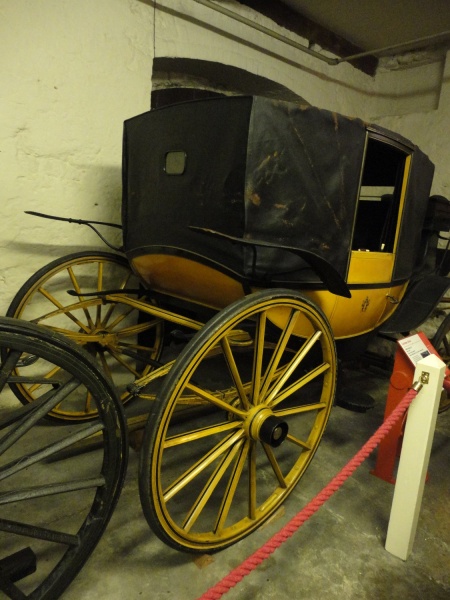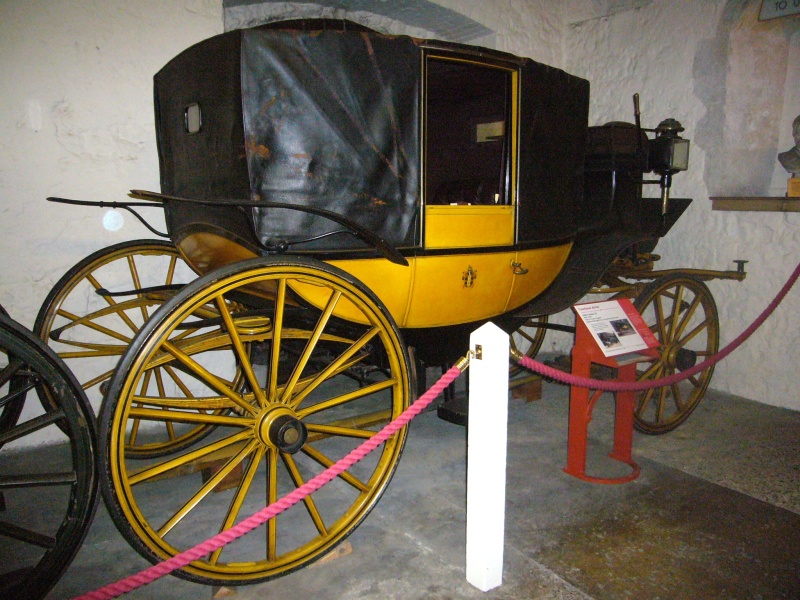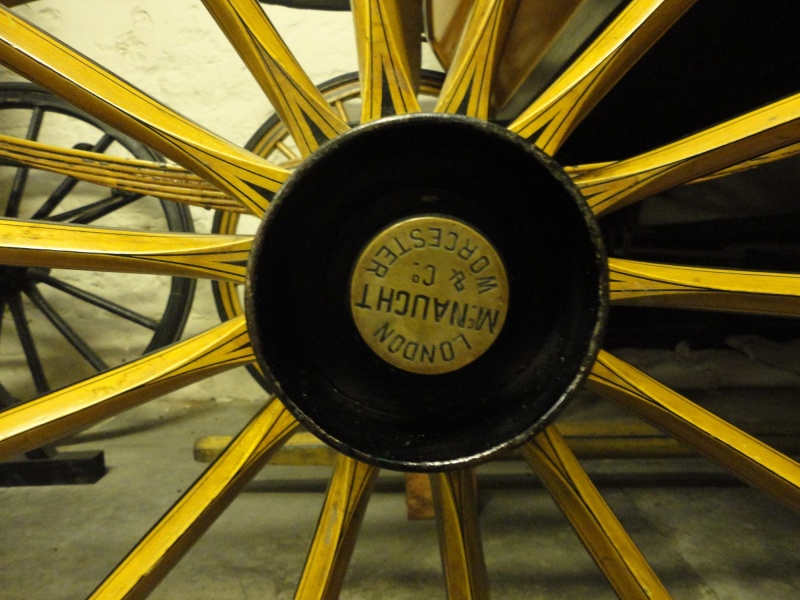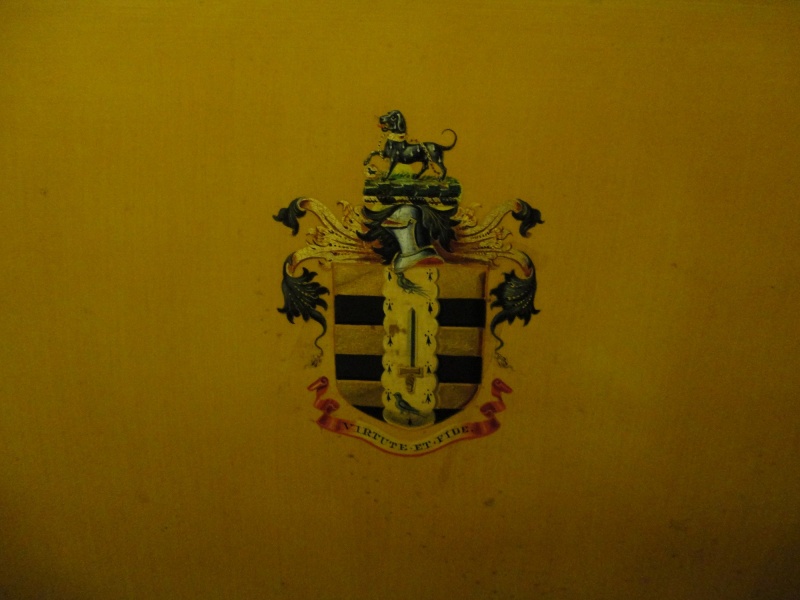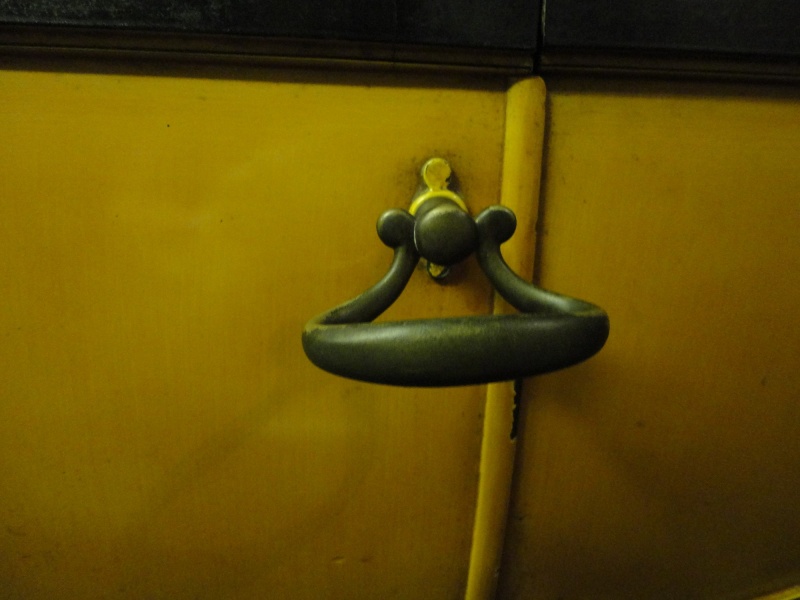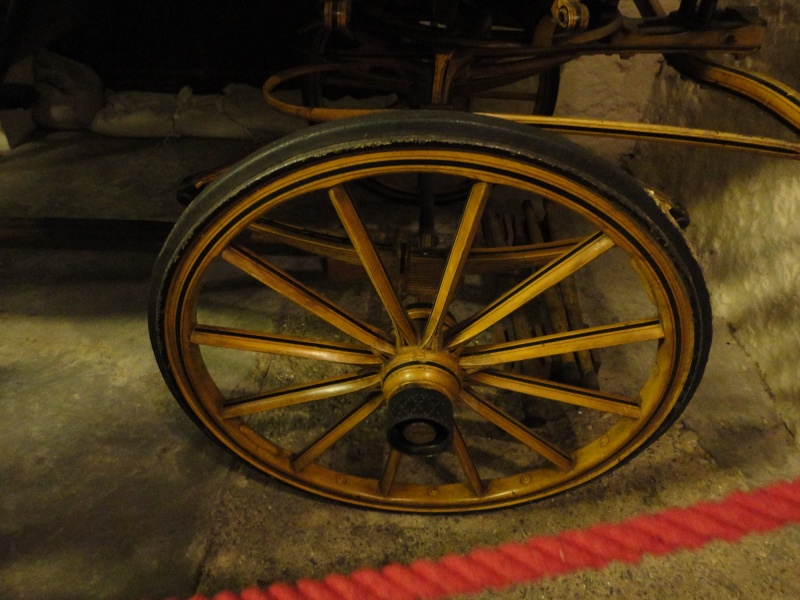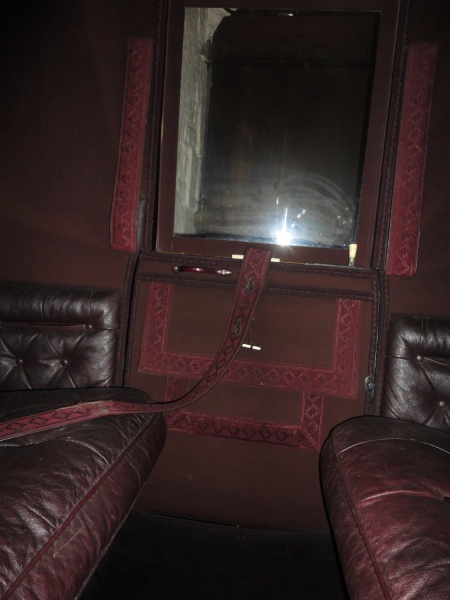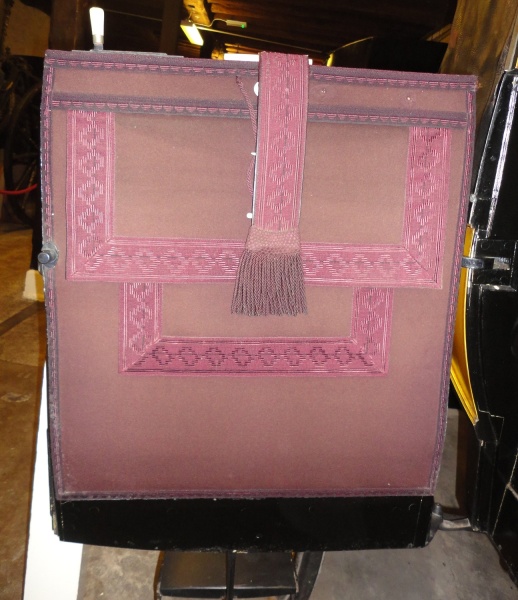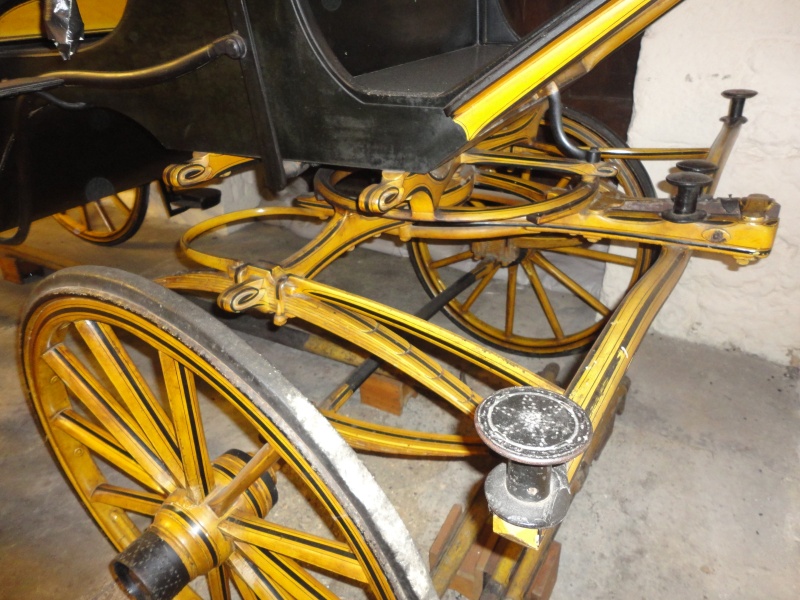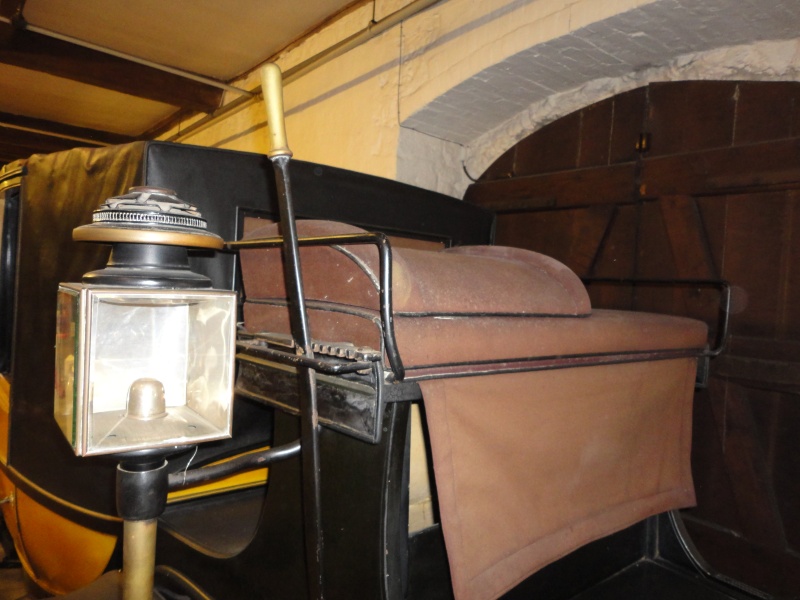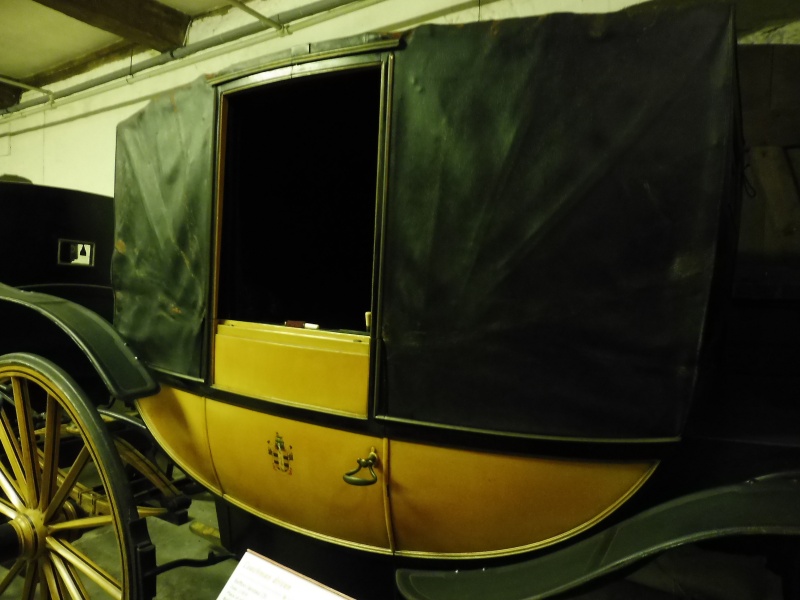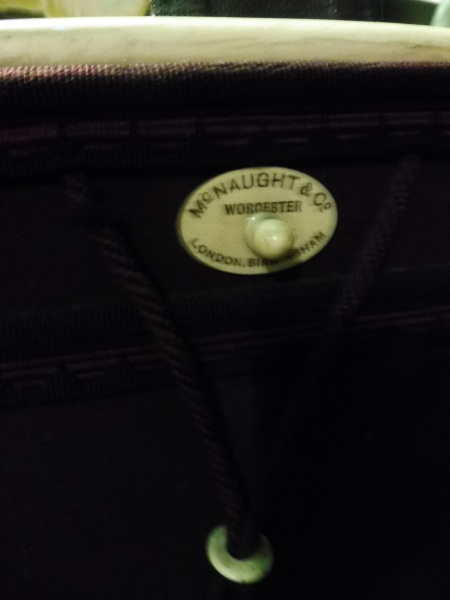Use the dots above to scroll through images.
Listed in 1 collection
Listed at 1 museum
Listed for 1 maker
Quick Details
Carriage Type
Canoe Landau
Date of Production
1870
Materials used
Paint, Wood, Iron, Leather, Wool Box Cloth, Bone, Brass, Silk, RubberSummary of Canoe Landau
This is a super example of a Canoe Landau by a coachbuilder who was very good at building this type of carriage. McNaught and Co were based in Worcester, London and Birmingham. It is finished in yellow with black lining and a chocolate brown interior. A very smart carriage for use on sunny and cool days.
At the start of the nineteenth century Landaus were big heavy carriages, open versions of the contemporary coaches. Later in the century, when many more people could afford to own carriages, everyday carriages became smaller and lighter. A successful professional family who could afford to employ a coachman would very likely own a brougham, a closed carriage for bad weather and night-time use, and a victoria, an open carriage for use in fine weather. This was an ideal combination but, if they owned a landau, they only needed one carriage for both uses because, with the head raised, it was a closed four seat carriage, but it could be quickly and easily converted to an open carriage simply by lowering the head. Several different styles of everyday landaus were developed. The canoe landau was obviously so named because it has a canoe-shaped body. If a canoe-bodied landau was so small that it could be pulled by one horse it was called a Sefton landau, after the Earl of Sefton for whom the first one was built, and it was considered a breakthrough for a landau to be so small at that time. If the body had an angular profile and a deep foot well it was called a Shelburne landau, after the Earl of Shelburne who had the first of that pattern built. Early landaus had head joints, the hinged stays visible outside the leather of the head, which kept it tightly stretched, but a servant had to get down to raise or lower the head. Many types of head lifts were later developed, spring-assisted mechanisms that were fitted between the head leather and the fabric head cloth ‘which facilitate the closing and opening of the heads, almost as simple in action as the opening or closing of an umbrella or a parasol’ as the celebrated carriage builder G. N. Hooper wrote in 1890.
Dimensions
Height: 6ft 9”
Length: 12ft 9”
Width: 5ft 11”
Full description
A very nice, beautifully built Canoe Landau. Its build is not quite light enough to be a Sefton Landau which is so light that it can be pulled by a single horse. The body of this Landau has a curved underside and is surmounted with a folding leather head. The mechanism is hidden between the leather and its lining. In the back is a small rectangular window with rounded corners, A larger rectangular window is in the front hood, this one has sharp corners.
Attached to the side panels at the back are sweeping splashguards made of leather. Further splashguards are at the front, these follow the curve of the underside of the carriage body. The coachman’s seat sits on a riser that is angular in profile but not heavy in its build. The seat has double railings and a leather skirt with brass beading painted black. One single long cushion upholstered in brown box cloth is on the seat and a sloping seat is on the driver side, also covered in brown cloth. A seat drop hangs to the front of the seat consealing a storage area, also in brown box cloth.
The doors have upper frames that fold back with the two halves of the leather head. They are mounted on concealed hinges and have simple elegant loop handles in brass. Each door has a sliding window with brown velvet covered frame.
To mount the coachman’s seat the wheel hubs are jagged as are the top edges of the roller bolts. There is no further step as one might expect attached to the footboard. A step with a semi-circular tread supported on a bracket bolted to the underside of the body of the carriage enables access to the seating. This step has a cover which is bolted to the bottom edge of the door. A pair of lamps are supported on brackets bolted to the underside of the coachman’s seat. They are square in shape with circular single chimneys.
The Landau has 12 and 14 spoke English pattern wheels on rubber tyres and collinge axles. Both axles are slightly compassed up. Elliptic springs on the front and back. A lever break is fitted to the rear wheels. The forecarriage is light in its construction. The futchells sit on top of the splinter bar which is compassed down with roller bolts at each end. The inner roller bolts sit of the top of the futchells. A pair pole and team bars (not relevant to this carriage) are displayed with the carriage. The hind carriage is very straightforward with a cross bar bolted to the springs that supports the dumb irons of the body of the Landau.
The body, undercarriage and wheels are painted yellow with black lining. The coachman’s seat riser is painted black. Family crests are on each door.
Inside the Landau the seat cushions and back panels are covered with a buttoned deep red morocco leather. The doors, side panels and hood lining are of brown box cloth. The door pockets and laces are edged in a deep red broadlace and seaming lace with geometric patterns. One each door is a very neat little wood handle and carved bone furniture. The offside door has an oval bone plaque with the makers name. Covering the rear window is a small squab.
Inscriptions
On axle caps: McNaught & Co LONDON WORCESTER
On a plaque attached to the inside of the offside door: McNaught WORCESTER LONDON BIRMINGHAM
Condition report
Apart from the offside window frame which is broken this carriage is in very good order. There are some signs of mould on the interior which ought to be cleaned up.
Access information
This Canoe Landau is in the care of the Tyrwhitt-Drake Carriage Museum
Maidstone Museum and Art Gallery
St Faith's Street,
Maidstone
ME14 1LH
Picture Credit
Maidstone Museum and Bentliff Art Gallery / Amy Bracey / Robert Lovell

 Carriage Foundation
Carriage Foundation